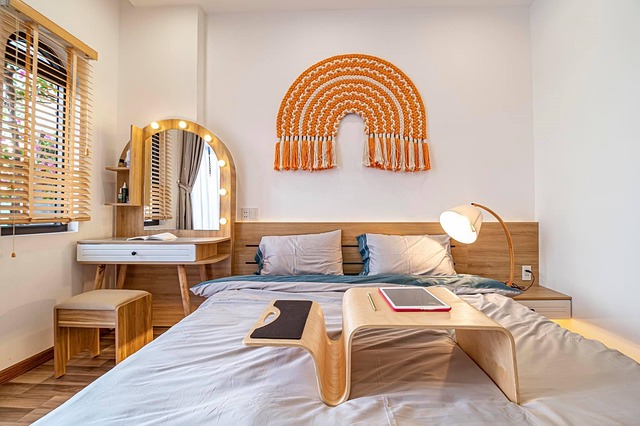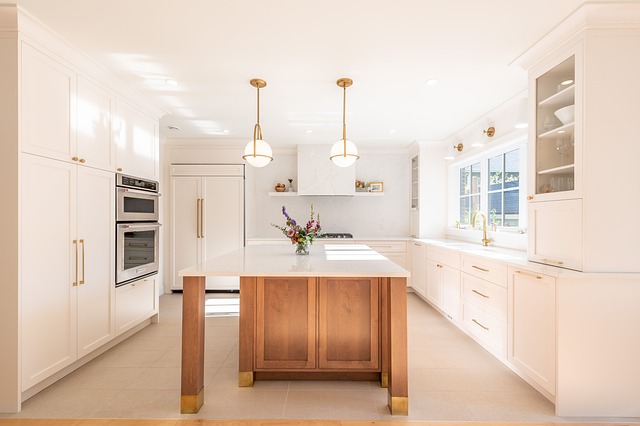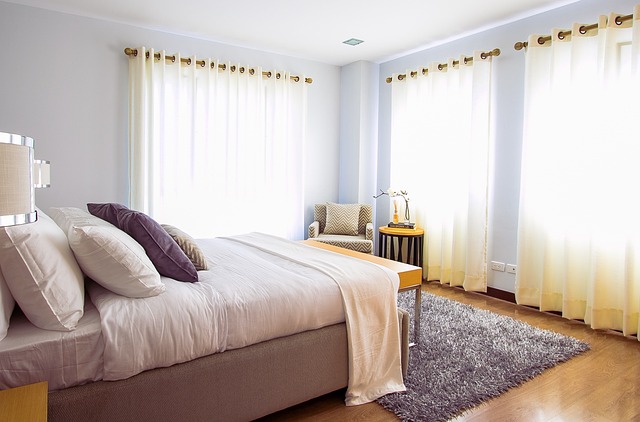Accessory Dwelling Units (ADUs), also known as in-law units, granny flats, or secondary suites, are independent living spaces located on the same property as a primary residence. Attached ADUs, in particular, are integrated into the main structure, often sharing walls or utilities. They offer numerous advantages, extending beyond the basic benefits of additional living space. Here’s an in-depth look at ten incredible benefits of attached ADUs that you might not have known about:
1. Enhanced Property Value
One of the most significant benefits of adding an attached ADU to your property is the potential increase in its market value. Attached ADUs are highly desirable for buyers looking for versatile living arrangements, whether for extended family, rental income, or additional space. Studies show that properties with ADUs can command higher prices compared to those without. The added living space and functionality make the property more attractive to potential buyers, particularly in areas with high real estate demand.
The value of a property is often influenced by its functionality and versatility. An attached ADU adds substantial value by offering an extra living space without needing a separate entrance, which is often considered more convenient. For homeowners considering selling, the presence of an attached ADU can be a major selling point, appealing to families looking for multi-generational living arrangements or those interested in renting out the unit for additional income.
2. Increased Rental Income
An attached ADU can serve as a source of rental income, providing homeowners with a steady stream of revenue. This can be particularly beneficial in high-demand rental markets where finding affordable housing can be challenging. The rental income generated from an attached ADU can help offset mortgage payments, property taxes, and maintenance costs, making homeownership more financially sustainable.
The demand for rental units is on the rise in many urban areas, and attached ADUs offer a practical solution for homeowners looking to capitalize on this trend. By renting out the attached ADU, homeowners can benefit from increased cash flow. This additional income can be used for various purposes, including saving for future investments, funding home improvements, or managing day-to-day expenses. Additionally, having a separate, self-contained unit allows homeowners to maintain privacy while still earning rental income.
3. Multi-Generational Living Solutions
Attached ADUs provide an ideal solution for multi-generational living arrangements. Families can accommodate elderly parents, adult children, or other relatives in a separate but adjacent living space. This setup allows for close proximity and support while maintaining individual privacy and independence. It also enables families to stay connected without the need for separate housing.
The concept of multi-generational living has gained popularity as families seek to support aging parents or provide a stable living environment for young adults. Attached ADUs facilitate this arrangement by offering a comfortable and private space for family members while keeping them close to the main household. This arrangement can foster stronger family bonds, provide immediate support, and enhance overall family dynamics. It also allows for shared expenses and resources, contributing to a more cohesive family unit.
4. Reduced Commute and Transportation Costs
For families with working adults or students, an attached ADU can significantly reduce commute times and transportation costs. By providing a convenient living space on the same property, attached ADUs eliminate the need for long commutes to work or school. This can lead to lower fuel expenses, decreased wear and tear on vehicles, and reduced stress associated with daily travel.
Long commutes can be time-consuming and costly, impacting both financial and personal well-being. An attached ADU offers a practical solution by allowing residents to live close to their place of employment or educational institution. This proximity not only saves money on transportation but also provides more time for personal activities, family interactions, and relaxation. For remote workers or students, the attached ADU can serve as a dedicated workspace or study area, enhancing productivity and work-life balance.
5. Flexibility for Changing Life Circumstances
Attached ADUs offer unparalleled flexibility for adapting to changing life circumstances. Whether you need space for a growing family, a home office, or temporary accommodation for guests, an attached ADU can be tailored to meet your evolving needs. This adaptability makes it a valuable asset as life situations change, such as retirement, career shifts, or expanding family dynamics.
Life is unpredictable, and having a flexible living arrangement can be immensely beneficial. Attached ADUs provide homeowners with the ability to adjust their living space according to their current needs. For example, an empty-nester might repurpose the ADU into a hobby room or a guest suite, while a growing family could use it as a playroom or additional bedrooms. The versatility of an attached ADU ensures that it can evolve alongside your lifestyle, offering practical solutions for various scenarios.
6. Enhanced Privacy
While attached ADUs are physically connected to the primary residence, they offer a degree of separation that enhances privacy. Residents of the ADU can enjoy their own space without feeling isolated, and the main household can maintain its routines without significant disruptions. This arrangement strikes a balance between communal living and personal privacy.
Privacy is a crucial consideration for many homeowners, especially in shared living arrangements. An attached ADU provides a distinct living area that allows individuals or small families to have their own space while still being part of the same property. This setup is ideal for situations where privacy is important, such as when accommodating adult children, elderly parents, or guests. The design of the ADU can also include separate entrances, private amenities, and soundproofing measures to further enhance privacy.
7. Energy Efficiency and Sustainability
Attached ADUs can be designed with energy efficiency and sustainability in mind. By sharing walls and utilities with the main house, they benefit from reduced energy consumption compared to detached units. Additionally, modern ADUs can incorporate green building practices, such as solar panels, energy-efficient appliances, and sustainable materials, contributing to lower utility bills and a smaller environmental footprint.
Sustainability is a growing concern for many homeowners, and attached ADUs offer an opportunity to implement eco-friendly practices. By integrating energy-efficient systems and sustainable building materials, homeowners can reduce their overall energy consumption and minimize their environmental impact. Shared walls and utilities also contribute to lower heating and cooling costs, as the ADU benefits from the main house’s existing infrastructure. Incorporating green technologies and practices into the design of an attached ADU aligns with broader sustainability goals and promotes environmental responsibility.
8. Improved Property Utilization
Attached ADUs maximize the use of available land and property. Instead of expanding outward and potentially encroaching on yard space, an attached ADU makes efficient use of existing structures. This approach is particularly advantageous in urban areas where space is limited and optimizing land use is crucial.
In densely populated urban areas, land is a valuable and limited resource. Attached ADUs offer a way to make the most of available property without sacrificing outdoor space or encroaching on neighboring properties. By integrating the ADU into the existing structure, homeowners can enhance property utilization and create additional living space without expanding the footprint of the primary residence. This approach aligns with principles of smart growth and sustainable urban development.
9. Tax Benefits and Incentives
In some regions, homeowners who add an attached ADU to their property may be eligible for tax benefits and incentives. These can include property tax deductions, tax credits for energy-efficient upgrades, or grants for affordable housing development. It’s worth researching local regulations and programs to take advantage of potential financial benefits associated with attached ADUs.
Government incentives and tax benefits can significantly reduce the financial burden of adding an attached ADU. Many jurisdictions offer programs to encourage the development of ADUs, particularly those that support affordable housing or sustainability goals. Homeowners can benefit from reduced property taxes, tax credits for energy-efficient improvements, or even financial assistance for construction costs. Understanding and leveraging these benefits can make the investment in an attached ADU more financially viable and rewarding.
10. Community and Social Benefits
Attached ADUs contribute to the broader community by providing additional housing options and promoting diverse living arrangements. They can help address housing shortages, support affordable living solutions, and foster a sense of community by accommodating extended family members or tenants. This increased availability of housing can have positive social impacts, enhancing neighborhood cohesion and stability.
The housing crisis is a pressing issue in many communities, and attached ADUs offer a practical solution by increasing the supply of available housing. By providing flexible and affordable living options, ADUs can help alleviate housing shortages and support diverse family structures. Additionally, having extended family members or tenants living nearby can strengthen community ties and contribute to a more supportive and connected neighborhood. The presence of ADUs can also promote inclusive and multi-generational living arrangements, enhancing the overall social fabric of the community.
Conclusion
In summary, attached ADUs offer a range of incredible benefits that go beyond merely adding extra living space. They enhance property value, provide rental income, support multi-generational living, reduce transportation costs, offer flexibility, enhance privacy, promote energy efficiency, improve property utilization, provide tax benefits, and contribute to community well-being. Understanding these benefits can help homeowners make informed decisions about incorporating attached ADUs into their properties, ultimately leading to a more functional, valuable, and sustainable living environment.

Maximize Your Property with Attached ADUs by Red White & Blue Construction!
Are you considering an attached ADU in Lafayette, CA? Look no further than Red White & Blue Construction, your trusted ADU specialists! Transform your property with a custom attached ADU that caters to your changing lifestyle needs. Renowned for our expertise in ADU projects, we’re here to turn your ideas into reality, be it a cozy extension to your home, a stylish in-law suite, or a functional home office. Our proven track record in the Bay Area stands as a testament to our commitment, craftsmanship, and the exceptional standards we uphold in every undertaking.
At Red White & Blue Construction, we’re more than just builders; we’re architects of your ideal living solution. With our transparent pricing and exceptional client service, you’re not just adding an ADU; you’re investing in a versatile, value-adding extension of your home. Choose Red White & Blue Construction for your ADU project. Embark on a journey of Property Enhancement Excellence and contact us today!
Disclaimer
The materials available on this website are for informational and entertainment purposes only and not to provide advice. You should obtain advice concerning any particular issue or problem from a professional. You should not act or refrain from acting based on any content included in this site without seeking legal or other professional advice. The information presented on this website may reflect only some of the current building developments. No action should be taken in reliance on the information on this website. We disclaim all liability concerning actions taken or not taken based on any or all of the contents of this site to the fullest extent permitted by law.





